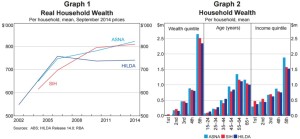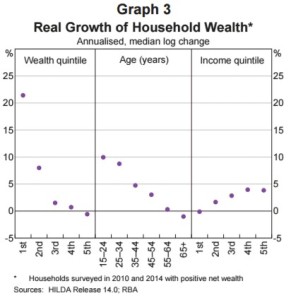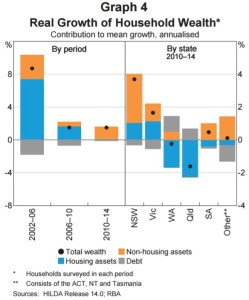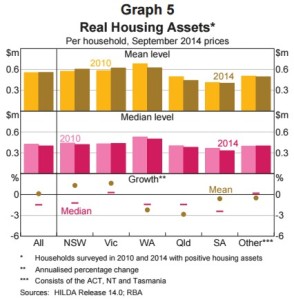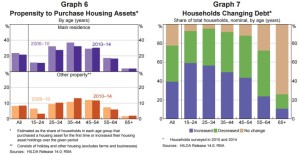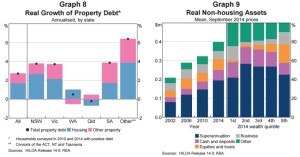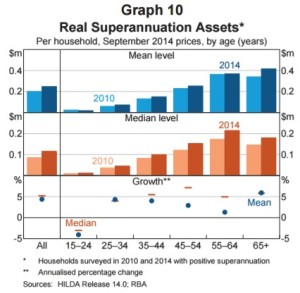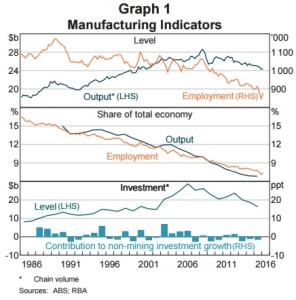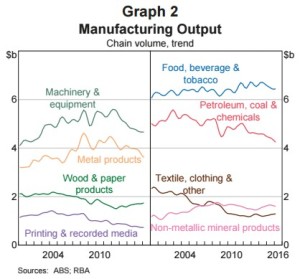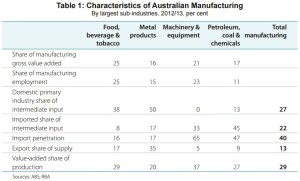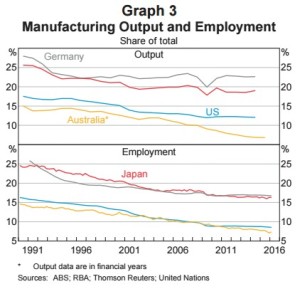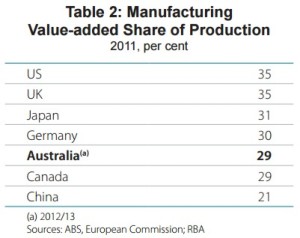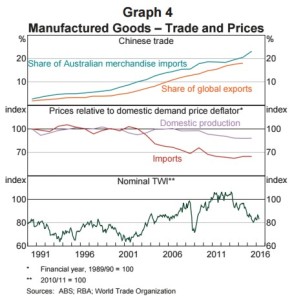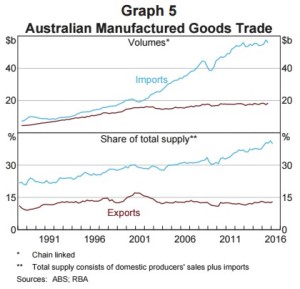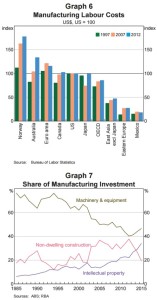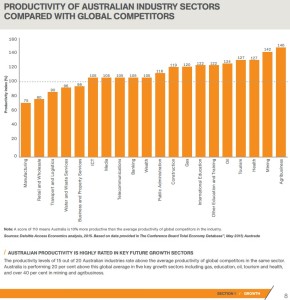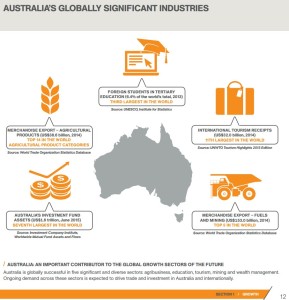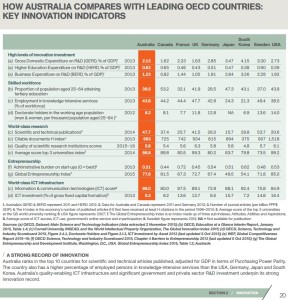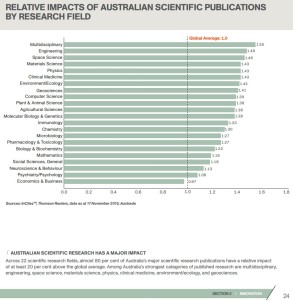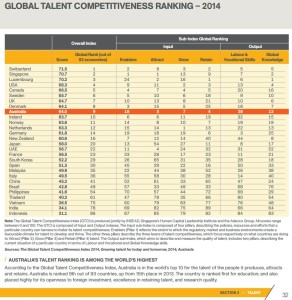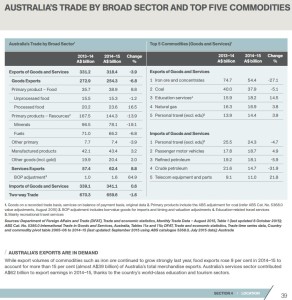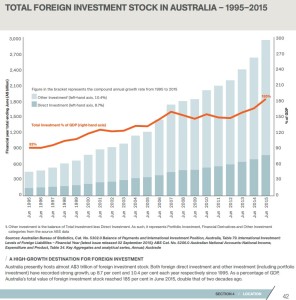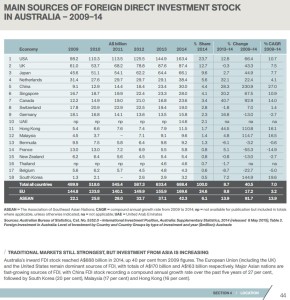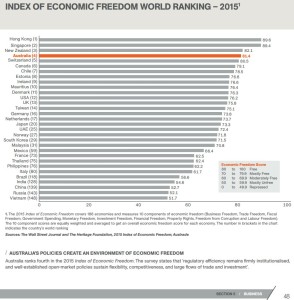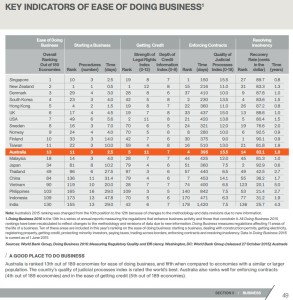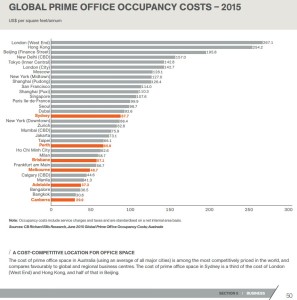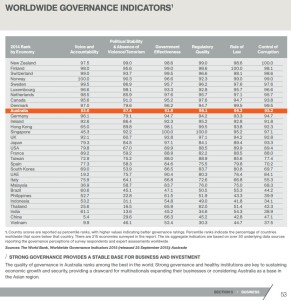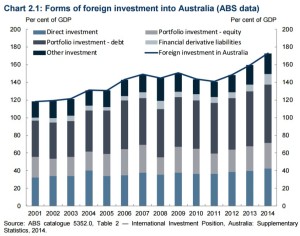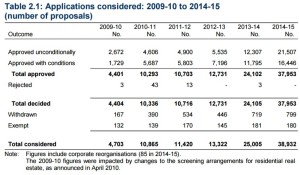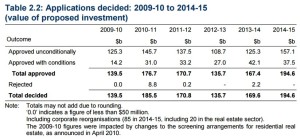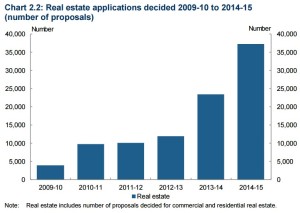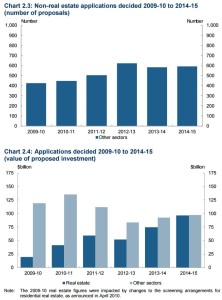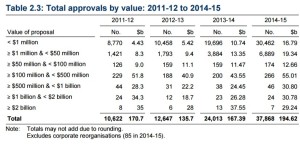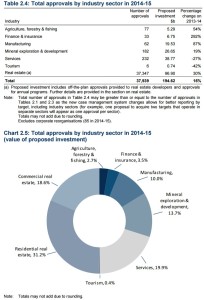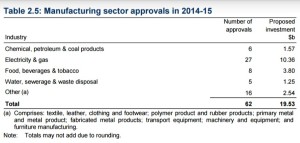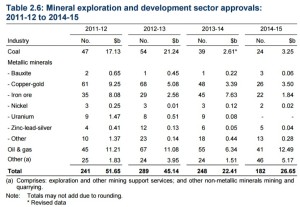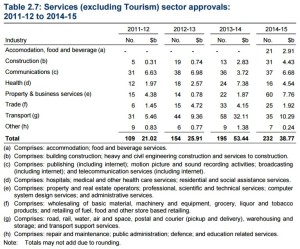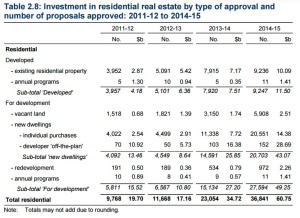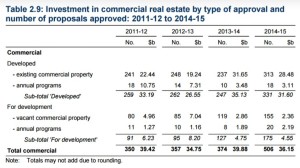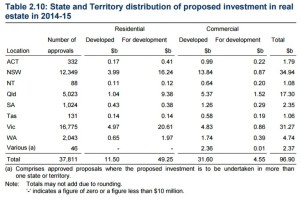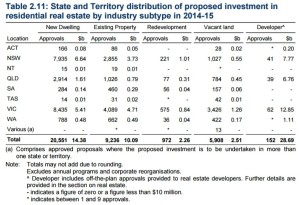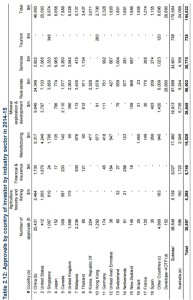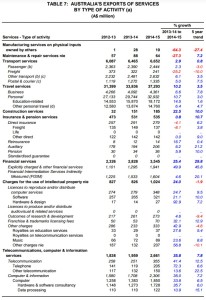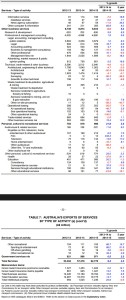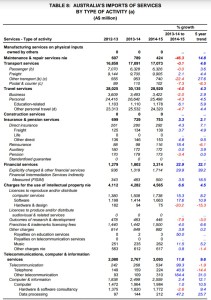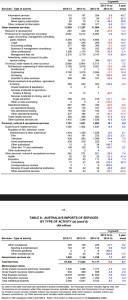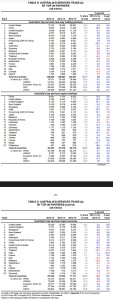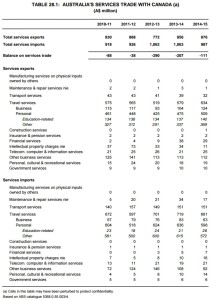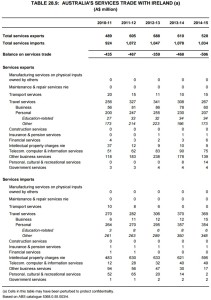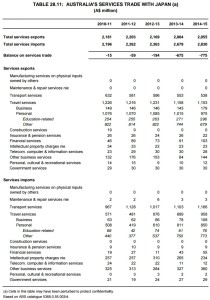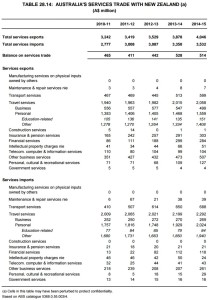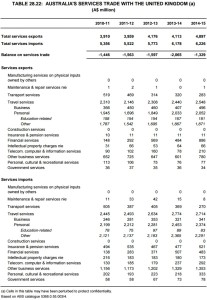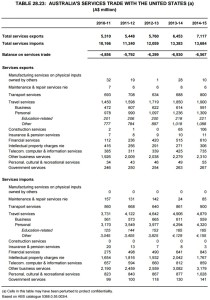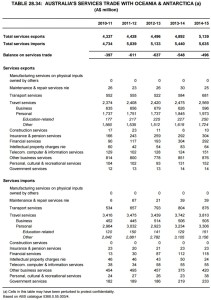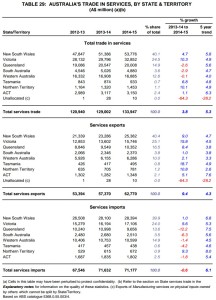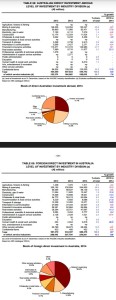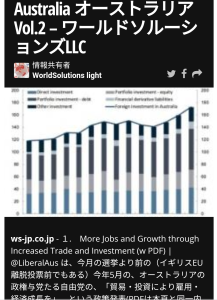日米首脳会談自体からは離れていますが、標記関連ツイートの一部を以下貼っておきます。
Good Trump or bad Trump: which will Asia get? https://t.co/620WR0RsIo
— The Sydney Morning Herald (@smh) November 11, 2017
'Criminals': Malcolm Turnbull lashes North Korea https://t.co/eFDGW0LTbU | @lindsay_murdoch
— The Sydney Morning Herald (@smh) November 12, 2017
'I would never call him short and fat': Donald Trump on Kim Jong-un https://t.co/nx1v68VHYD | @KirstyLNeedham
— The Sydney Morning Herald (@smh) November 12, 2017
Analysis: At APEC Canada is AWOL while America is at home playing with its guns https://t.co/BtfPL04SFd | @npomalley
— The Sydney Morning Herald (@smh) November 12, 2017
Malcolm Turnbull responds to Justin Trudeau's snub during trade deal https://t.co/8usqnNeozw | @lindsay_murdoch
— The Sydney Morning Herald (@smh) November 11, 2017
When Vladimir Putin and Donald Trump last met it, it was a love-in. Not this time https://t.co/jqYRhRaG5Z
— The Sydney Morning Herald (@smh) November 11, 2017
US will no longer be 'taken advantage of' on trade: Trump's sharp rebuke https://t.co/ejVVbGzy65 | @lindsay_murdoch
— The Sydney Morning Herald (@smh) November 10, 2017
Breaking: Canada's PM Justin Trudeau sabotages Trans-Pacific Partnership, shocking leaders https://t.co/F5ViGa8Loz
— The Sydney Morning Herald (@smh) November 10, 2017
TPP to be salvaged in a deal reached on APEC sidelines https://t.co/5CTypO0PiY | @lindsay_murdoch
— The Sydney Morning Herald (@smh) November 10, 2017
Ignore 'Trump trade', the booming markets are not all about him https://t.co/AkiJLMePA7
— The Sydney Morning Herald (@smh) November 9, 2017
'Great chemistry': Donald Trump says with China he can solve all of the world's problems https://t.co/hpPsiNH3Qs | @KirstyLNeedham
— The Sydney Morning Herald (@smh) November 9, 2017
Reborn Trans Pacific Partnership could see vital subsidised drugs cost more https://t.co/dx4AHY5IG6 | @1petermartin
— The Sydney Morning Herald (@smh) November 8, 2017
'Do not try us': Donald Trump's message to North Korea https://t.co/DwxO9FWdhu | @KirstyLNeedham
— The Sydney Morning Herald (@smh) November 8, 2017
'Do not try us': Donald Trump's message to North Korea https://t.co/DwxO9FWdhu | @KirstyLNeedham
— The Sydney Morning Herald (@smh) November 8, 2017
Bill Gates and China join forces to develop world-first nuclear technology https://t.co/1PIhWORmkj
— The Sydney Morning Herald (@smh) November 7, 2017
Perhaps we can thank his America First for making us think about Australia First, writes Peter Hartcher https://t.co/iYBObNQDEl
— The Sydney Morning Herald (@smh) November 7, 2017
Australian drills to stop and search North Korean weapons ships https://t.co/BsnXe9zV34 | @davidwroe
— The Sydney Morning Herald (@smh) November 6, 2017
Malcolm Turnbull's Indigenous referendum response condemned https://t.co/4AiDiudXom #auspol
— The Sydney Morning Herald (@smh) November 5, 2017
Australia warns of terror threat to Manila https://t.co/D32unm5i5j | @lindsay_murdoch
— The Sydney Morning Herald (@smh) November 5, 2017
Global battle to build Australian warships heats up https://t.co/oeyAEk4s7Y | @latikambourke
— The Sydney Morning Herald (@smh) November 5, 2017
'Crackdown is on': news that will cheer Donald Trump https://t.co/8nqtCDAXlz | @KirstyLNeedham
— The Sydney Morning Herald (@smh) November 5, 2017
I'd never call Kim 'short and fat', says Trump in response to 'old' barb https://t.co/DPhN1RV8dq
— Guardian Australia (@GuardianAus) November 12, 2017
As Trump fawns over Xi, global politics is now a ‘strong man’ game | Will Hutton https://t.co/01r2hL9Yua
— Guardian Australia (@GuardianAus) November 12, 2017
Tracking Trump: mood swings in Asia and election struggles at home https://t.co/kUFLmrRRUO
— Guardian Australia (@GuardianAus) November 11, 2017
Putin and Trump want political solution to Syria conflict, Kremlin says https://t.co/9IKiv61rro
— Guardian Australia (@GuardianAus) November 11, 2017
China faces historic corruption battle, new graft buster says https://t.co/Dau5HTxQwi
— Guardian Australia (@GuardianAus) November 11, 2017
Trans-Pacific trade deal salvaged despite Canada U-turn, reports say https://t.co/gOHLuoVCPa
— Guardian Australia (@GuardianAus) November 10, 2017
Trump attacks countries 'cheating' America at Apec summit https://t.co/Trlbh2GFFb
— Guardian Australia (@GuardianAus) November 10, 2017
Japan anger over South Korea's shrimp surprise for Donald Trump https://t.co/jIuZVO7M2s
— Guardian Australia (@GuardianAus) November 10, 2017
Chinese media hails success of Trump's 'pilgrimage ' to Beijing https://t.co/Mv9NR6DEUo
— Guardian Australia (@GuardianAus) November 10, 2017
Trump's tricky talks: five world leader meetings to watch at the Apec summit https://t.co/zBHyDkDSff
— Guardian Australia (@GuardianAus) November 10, 2017
Speaker stands by ban on Donald Trump addressing parliament https://t.co/82GZNHVprh
— Guardian Australia (@GuardianAus) November 9, 2017
Trump ridiculed the losers. Now, at home and abroad, he is one of them | Martin Kettle https://t.co/ddqNypSlK9
— Guardian Australia (@GuardianAus) November 9, 2017
The Guardian view on Trump in China: a bromance unlikely to run smooth | Editorial https://t.co/7Essp1q444
— Guardian Australia (@GuardianAus) November 9, 2017
Harassment and house arrest in China as Trump has 'beyond terrific' time https://t.co/xYMYs8aEGP
— Guardian Australia (@GuardianAus) November 9, 2017
Donald Trump calls on China to 'act faster' over North Korea threat https://t.co/XvUGz2dQi8
— Guardian Australia (@GuardianAus) November 9, 2017
Matjaž Tančič's best photograph: a pink-hatted woman in Pyongyang Folklore Park https://t.co/7wwarS1e4r
— Guardian Australia (@GuardianAus) November 8, 2017
Donald Trump abandons secret trip to Korea's DMZ due to fog https://t.co/L7tArFYcvC
— Guardian Australia (@GuardianAus) November 8, 2017
What will happen on Trump's super-sized state visit to China? https://t.co/khd2kkFT9j
— Guardian Australia (@GuardianAus) November 8, 2017
Trump strikes conciliatory tone over North Korea standoff https://t.co/0Bj2t42RAq
— Guardian Australia (@GuardianAus) November 7, 2017
Late-night hosts: with Trump, Japan again faces 'a monster with tiny hands' https://t.co/K3fNjtgJeH
— Guardian Australia (@GuardianAus) November 7, 2017
Pen-Pineapple-Apple-President: Donald Trump meets Pikotaro https://t.co/O6WP447vtB
— Guardian Australia (@GuardianAus) November 7, 2017
John Oliver on Trump: 'He's using his own incompetence as a defense' https://t.co/4qa2rLvHke
— Guardian Australia (@GuardianAus) November 6, 2017
Like acid rain, the Trumps were hard to avoid in 80s New York https://t.co/qEHONDMGoa
— Guardian Australia (@GuardianAus) November 6, 2017
Trump defends strong rhetoric in calling North Korea 'a threat to civilised world' https://t.co/j9Pl18clkq
— Guardian Australia (@GuardianAus) November 6, 2017
Friends? Donald Trump tweets he would never call Kim Jong-un 'short and fat' #NorthKorea #uspoli
(Pic: Reuters) https://t.co/1Ox0jabE3F pic.twitter.com/mOc1khcCMM— ABC News (@abcnews) November 12, 2017
"The Chinese are as frustrated with North Korea's conduct as everybody else is," @TurnbullMalcolm speaking from Hong Kong pic.twitter.com/bghqzMvCG4
— ABC News (@abcnews) November 12, 2017
Eleven countries reach "fundamental agreement" on continuing with free trade pact as #TPP rebadged https://t.co/t6xAXNTxax #TransPacificPartnership
— ABC News (@abcnews) November 11, 2017
#TPP talks stall as #JustinTrudeau fails to show up to final meeting https://t.co/xcdmD0xaf5
— ABC News (@abcnews) November 10, 2017
Australian exporters will soon have market access to one of Latin America's fastest growing economies with the signing of the Peru-Australia Free Trade Agreement https://t.co/1jbrI8SIxM
— ABC News (@abcnews) November 10, 2017
Donald Trump's six-year-old granddaughter Arabella Kushner earns an 'A-plus' from the Chinese President for her performance of traditional songs and poems in Mandarin https://t.co/N8phWbq7qM pic.twitter.com/sRO01RZpGr
— ABC News (@abcnews) November 10, 2017
Malcolm Turnbull is facing big choices, but picking between @realDonaldTrump and Xi Jinping isn't one of them. #auspol #uspoli (Pic: Reuters)#Opinion by Alastair Davishttps://t.co/TFzlKA1SEv pic.twitter.com/XQAXSFz8EF
— ABC News (@abcnews) November 9, 2017
Challenging time for U.S-Vietnam relations, says the ANU'S Dr Huong Le Thu, ahead of President Trump's visit to Vietnam #TPP @bevvo14 pic.twitter.com/v1SZNmQ9c4
— ABC News (@abcnews) November 9, 2017
China-U.S trade deals: Donald Trump gives China backhanded compliment; pretty blunt thing to say on Chinese soil, says @billbirtles @bevvo14 pic.twitter.com/95yOP9vHaY
— ABC News (@abcnews) November 9, 2017
#DonaldTrump to push China on trade, #NorthKorea during his two-day visit https://t.co/D6OHbrrcw6
— ABC News (@abcnews) November 8, 2017
Fmr US Ambassador Kim Beazley says @realDonaldTrump's speech to South Korean parliament an opportunity to reach out ordinary Korean voter pic.twitter.com/8EhlY41VdI
— ABC News (@abcnews) November 8, 2017
The yawning chasm at the heart of US politics is growing wider (Pic: Reuters) #uspoli #ANALYSIS https://t.co/X10Eerh3TK pic.twitter.com/AqLg2zBBte
— ABC News (@abcnews) November 8, 2017
.@realDonaldTrump warns North Korea: 'Do not underestimate' United States (Pic: Reuters) https://t.co/OVM9RA41rn pic.twitter.com/qYdGzMP2ji
— ABC News (@abcnews) November 8, 2017
Fog forces Trump to abandon surprise trip to Korean DMZ https://t.co/TWk09999aT
— ABC News (@abcnews) November 8, 2017
Donald Trump has a mission in Asia, but it's not one his allies want #opinion https://t.co/C190UqlWbB (Pic: Reuters) pic.twitter.com/UrrRPNzMR0
— ABC News (@abcnews) November 7, 2017
#DonaldTrump calls for 'world action' and warns the US is ready to use military force if needed https://t.co/jFkJ1lTwdH
— ABC News (@abcnews) November 7, 2017
"Trump is not popular among the South Korean public,” Dr Kim Jiyoon from @asaninst unpacks his visit #ABCTheWorld @AuskarSurbakti pic.twitter.com/yu11Urcd2k
— ABC News (@abcnews) November 7, 2017
Japan supports #Trump’s general approach to NK, but unnerved by his rhetoric says Prof. Tadashi Anno @SophiaUniv_ENG @bevvo14 #ABCTheWorld pic.twitter.com/l7oy28fsxd
— ABC News (@abcnews) November 6, 2017
"He's talked about a free and open Indo-Pacific, we haven't seen that yet," @ashleytownshend on @realDonaldTrump Asia visit. pic.twitter.com/Vh62sIaBdN
— ABC News (@abcnews) November 5, 2017
Ground invasion 'only way' to destroy North Korea weapons program: Pentagon (Photo: KCNA/AP) https://t.co/hMqXnWfwiu pic.twitter.com/mkGpX7yGlf
— ABC News (@abcnews) November 5, 2017
Refusing visas to #NorthKorean football team unlikely to affect Kim Jon-un's nuclear weapons program, expert says https://t.co/iRDhRP8Rap
— ABC News (@abcnews) November 5, 2017
#DonaldTrump begins Asian trip in Japan, with ketchup, golf and nuclear war on agenda https://t.co/IRBMTIGQeV
— ABC News (@abcnews) November 4, 2017
Inside the classroom of the #NorthKorean #school in Tokyo https://t.co/GkP2Rpevco pic.twitter.com/te93tBlSor
— ABC News (@abcnews) November 4, 2017
US President @realDonaldTrump will meet Prime Minister @TurnbullMalcolm in Asia this month https://t.co/T0NhqUm1PG #auspol #asiatour
— ABC News (@abcnews) November 4, 2017
Daughter of jailed Vietnamese blogger Mother Mushroom appeals to Melania Trump for help during #APECVN2017 visit https://t.co/zoi5etPjO3 pic.twitter.com/0MpCgl8Q71
— ABC News (@abcnews) November 10, 2017
.@realDonaldTrump says US deal with Russia on Syria will save 'tremendous numbers of lives' https://t.co/96TzxZ1OQa #APEC2017 #Syria
— ABC News (@abcnews) November 11, 2017
'I believe him': @realDonaldTrump takes Putin's word, says he did not meddle in US election (Pic: AP) #uspoli https://t.co/96TzxZ1OQa pic.twitter.com/drnayFwbv3
— ABC News (@abcnews) November 11, 2017
Malcolm Turnbull can't stay silent on Rodrigo Duterte's murderous drug war when he visits the Philippines #auspol (Pic AP) #Opinion by Elaine Pearsonhttps://t.co/Gei3w89ezI pic.twitter.com/fWG1S3eBaN
— ABC News (@abcnews) November 11, 2017
Trans-Pacific trade deal salvaged despite Canada snub: reporthttps://t.co/TVIBhnMGEC
— SBS News (@SBSNews) November 10, 2017
#Breaking: Trump says he would never call North Korea leader 'short and fat'
— SBS News (@SBSNews) November 12, 2017
Trans-Pacific Partnership negotiations are 90 per cent there: Ciobo https://t.co/Jpw3NdT1H4
— SBS News (@SBSNews) November 11, 2017
North Korea brands Trump a 'warmonger' as his Asia tour moves to Hanoi https://t.co/9tLXgyLQtN
— SBS News (@SBSNews) November 11, 2017
Three US naval carriers lead military drill aimed at North Korea https://t.co/Cwydb6DOVQ
— SBS News (@SBSNews) November 11, 2017
'Not an ideal outcome': Trade minister says TPP talks stalled by Canada https://t.co/osimeyHP8P
— SBS News (@SBSNews) November 10, 2017
Turnbull juggles Asian trade talks and citizenship sagahttps://t.co/P4lr6oxt4X
— SBS News (@SBSNews) November 9, 2017
'Hello Grandpa Xi': Trump's Mandarin-speaking granddaughter impresses Chinese leaderhttps://t.co/5IvvhNHnCI
— SBS News (@SBSNews) November 9, 2017
.@realDonaldTrump's tour of Asia: What's on his agenda? https://t.co/e7bCR2qw4V
— SBS News (@SBSNews) November 9, 2017
.@realDonaldTrump and Xi herald new era in relations as they agree North Korea solution can be found https://t.co/ZQWnm1CwAQ
— SBS News (@SBSNews) November 9, 2017
Your guide to APEC: @TurnbullMalcolm tours Asia to talk trade and terror https://t.co/jhnIeK6MYT by @danielaritorto
— SBS News (@SBSNews) November 9, 2017
Trump in China for talks on North Korea's 'cruel dictatorship' https://t.co/Uge4ad4anb
— SBS News (@SBSNews) November 8, 2017
.@realDonaldTrump issues warning to North Korea in South Korea address https://t.co/iqhLrGA80e
— SBS News (@SBSNews) November 8, 2017
#BREAKING: Donald Trump aborts surprise visit to Korean Demilitarised Zone https://t.co/tgbM8RUOXy
— SBS News (@SBSNews) November 8, 2017
Trump claims progress on 'worldwide threat' of North Korea https://t.co/ecKODKqETW
— SBS News (@SBSNews) November 7, 2017
Donald Trump vows to 'figure out' North Korea nuclear crisis with South Korean leader https://t.co/JfAyoBDkGB
— SBS News (@SBSNews) November 7, 2017
Donald Trump arrives in South Korea for talks https://t.co/qSeKolW68G
— SBS News (@SBSNews) November 7, 2017
Protests in South Korea ahead of Trump visithttps://t.co/lE14QfIvxK
— SBS News (@SBSNews) November 6, 2017
.@realDonaldTrump says 'strategic patience' with North Korea is over https://t.co/v1I7wnaeWW
— SBS News (@SBSNews) November 6, 2017
South Korea announces new sanctions against North Korea ahead of Trump visit https://t.co/8EdYjeRFai
— SBS News (@SBSNews) November 6, 2017
.@realDonaldTrump kicks off his extended Asian tour in Japan. https://t.co/DdVuKjvg7h pic.twitter.com/z7HidN1sKC
— SBS News (@SBSNews) November 6, 2017
Tony Abbott warns of Liberal 'meltdown' https://t.co/FzIdt3JBJb #auspol
— SBS News (@SBSNews) November 6, 2017
Here's what to expect from the US President during his maiden tour of Asia.https://t.co/DdVuKjvg7h
— SBS News (@SBSNews) November 5, 2017
Trump says he's 'open' to meeting with North Korean leader
https://t.co/Q6bc71yJ2W— SBS News (@SBSNews) November 5, 2017
Australia, US to have full agenda at talks: PM https://t.co/Cu0UK6xkV6
— SBS News (@SBSNews) November 5, 2017
Securing North Korea's nukes would require US ground invasion: Report https://t.co/LKZujefDLK
— SBS News (@SBSNews) November 5, 2017
"Do not try us:" Donald Trump's message for Kim Jong-un from South Korea. Tune into @SBSNews at 18:30 AEDT for my report on the latest on the US President's Asia tour: https://t.co/rlWiQd2Ff7
— Katrina Yu (@Katmyu) November 8, 2017
ANALYSIS Justin Trudeau's no-show at trade talks reflects the new world disorder. https://t.co/zGmVzxh52h pic.twitter.com/RijVSLkcOK
— The Age (@theage) November 11, 2017
Trump has warned the US will no longer tolerate "chronic trade abuses" and would insist on equal trade policies https://t.co/oQ4ZizdLer pic.twitter.com/x0I0UyhSjE
— The Age (@theage) November 10, 2017
'Weight of this crisis is on your conscience': @DonaldTrump tells China and Russia to stop trade with North Korea. https://t.co/EPWvaaLfSK pic.twitter.com/QbXHWCvMra
— The Age (@theage) November 8, 2017
Trump begging for nuclear war: North Korea https://t.co/zu2fke6bi6 pic.twitter.com/bE6rLBKSNe
— Sky News Australia (@SkyNewsAust) November 12, 2017
No TPP deal reached at APEC https://t.co/2tJg617hWi pic.twitter.com/osXDfGG5ET
— Sky News Australia (@SkyNewsAust) November 11, 2017
Trudeau snubs trade meeting at APEC https://t.co/1agKJOQDQd pic.twitter.com/wqUFwyJIqI
— Sky News Australia (@SkyNewsAust) November 11, 2017
Manilla Activists protest against Trump https://t.co/xxgDVh8cEx pic.twitter.com/YhejPXc96A
— Sky News Australia (@SkyNewsAust) November 10, 2017
.@SimonJackman: 'As promised, the @POTUS show has been unconventional. He's thrown the rule book out the window' https://t.co/WpXGI1OSry pic.twitter.com/REIzzD6c7q
— Sky News Australia (@SkyNewsAust) November 10, 2017
Turnbull arrives in Vietnam for APEC https://t.co/0TgeINvhCX pic.twitter.com/lUQVZkmmcJ
— Sky News Australia (@SkyNewsAust) November 10, 2017
.@DrJamesCurran: We’ve seen a lot of happy snaps but the policy principles and fundamentals are unchanged. MORE https://t.co/Il4vzvhRrG pic.twitter.com/SlpgpZ8Gim
— Sky News Australia (@SkyNewsAust) November 9, 2017
.@MichaelSWesley: The US is overestimating how much leverage the Chinese have over North Korea. MORE https://t.co/Il4vzvhRrG pic.twitter.com/XbXto0aX8M
— Sky News Australia (@SkyNewsAust) November 9, 2017
Ex-Clinton adviser Nelson Cunningham: @realDonaldTrump's Asia trip has competing agendas: trade and security. MORE: https://t.co/bODv9FW6io pic.twitter.com/GAiSWCjPbi
— Sky News Australia (@SkyNewsAust) November 9, 2017
Trump challenges China over North Korea https://t.co/PO2cciwllS pic.twitter.com/veslT2LNYh
— Sky News Australia (@SkyNewsAust) November 9, 2017
Turnbull arrives for brief Hong Kong visit https://t.co/nfd4qrfMpC pic.twitter.com/gqnnuRx05q
— Sky News Australia (@SkyNewsAust) November 11, 2017
Professor Joseph Siracusa says he would give @realDonaldTrump a B-minus for his first year in office. #auspol MORE: https://t.co/mKinRrMVSf pic.twitter.com/NSdI1OWtbm
— Sky News Australia (@SkyNewsAust) November 9, 2017
TPP-11 put on hold with no future talks yet scheduled after Canada stood up other world leaders today. #APEC2017 @SkyNewsAust
— James O'Doherty (@jmodoh) November 10, 2017
Jacinda Ardern planning ‘substantive’ talks with Malcolm Turnbull about Manus Island at EAS https://t.co/rREto5YyB8 @SkyNewsAust
— James O'Doherty (@jmodoh) November 12, 2017
Aussie sugar, beef and dairy farmers to be among biggest winners from free trade deal to be struck with Peru. #9Newshttps://t.co/Ss9Ooe6frT
— Nine News Australia (@9NewsAUS) November 9, 2017
Australia is on the verge of signing a Pacific Rim trade pact abandoned by US President Donald Trump. #9News https://t.co/FnBxXKW4N0
— Nine News Australia (@9NewsAUS) November 10, 2017
.@TurnbullMalcolm has flown out of a crisis at home and into all the troubles in the world, writes @CUhlmann. #9News https://t.co/VNxgc0YhTh
— Nine News Australia (@9NewsAUS) November 10, 2017
Ministers at APEC leaders' summit are trying to reach agreement on Trans-Pacific Partnership. #9Newshttps://t.co/IJMLRx0pVG
— Nine News Australia (@9NewsAUS) November 9, 2017
.@TurnbullMalcolm is travelling to Vietnam for the Asia Pacific Economic Cooperation leaders’ summit. #9Newshttps://t.co/IJMLRx0pVG
— Nine News Australia (@9NewsAUS) November 8, 2017
The White House declined to comment on whether Trump would tweet from China. #9News https://t.co/voNmEG2jlP
— Nine News Australia (@9NewsAUS) November 8, 2017
Two Australian navy frigates have participated in war games with South Korea and the US. #9Newshttps://t.co/HE1si1YS2Y
— Nine News Australia (@9NewsAUS) November 7, 2017
US First Lady Melania Trump has received the photobomb treatment by a curious panda while visiting the Beijing Zoo. #9Newshttps://t.co/lKkDIXyVQQ
— Nine News Australia (@9NewsAUS) November 10, 2017
The leaders attended a modest service in Da Nang on Saturday on the sidelines of the Asia Pacific Economic Cooperation summit. #9Newshttps://t.co/tMd8b84oTU
— Nine News Australia (@9NewsAUS) November 11, 2017
The prime minister is due to meet several high-powered leaders including Mr Trump and controversial Philippines President Rodrigo Duterte during the conference. #9News https://t.co/gNtIDNHDXS
— Nine News Australia (@9NewsAUS) November 11, 2017
The US President has taken full advantage of the social media’s extended character limit. #9News https://t.co/NlVIoLQku3
— Nine News Australia (@9NewsAUS) November 12, 2017
Ever so cautiously, North Korea is going online. But using the internet in the rogue nation is nothing like we’ve ever experienced. #9Newshttps://t.co/bXtKCEdSd9
— Nine News Australia (@9NewsAUS) November 11, 2017
Donald Trump's all American diet is taking the Japanese by storm.#9News pic.twitter.com/g5XiV453dF
— Nine News Australia (@9NewsAUS) November 11, 2017
Mr Trump declined to say whether he believed Mr Putin, but made clear he's not interested in dwelling on the issue. #9Newshttps://t.co/hiefh65fUN
— Nine News Australia (@9NewsAUS) November 11, 2017
#BREAKING: Details of Russian activity pre-2016 presidential election emerges via deleted Twitter accounts. #9Newshttps://t.co/3UoveZX59Q
— Nine News Australia (@9NewsAUS) November 9, 2017
Malcolm Turnbull has flown out for the APEC summit, but was barely in the air when the citizenship crisis blew up again. @LCalcutt #9News. pic.twitter.com/ssgscsfW8N
— Nine News Australia (@9NewsAUS) November 9, 2017
Donald Trump has issued a stern warning to North Korea in a speech given in South Korea. #9News https://t.co/LkCKecWt4f
— Nine News LA (@9NewsLA) November 8, 2017
Melania Trump may be the First Lady but she's found herself upstaged by a South Korean popstar. #9News https://t.co/zeOYey7Qkc
— Nine News LA (@9NewsLA) November 10, 2017
Trump provokes ‘fat, short Kim’ https://t.co/FPUQdsFMZW pic.twitter.com/eHHynr71hf
— news.com.au (@newscomauHQ) November 12, 2017
The only good thing about Trump’s presidency so far? Melania’s outfits https://t.co/5ZFMaqyCG2 pic.twitter.com/wWGGhQqNIB
— news.com.au (@newscomauHQ) November 10, 2017
Fierce backlash is bad news for Trump https://t.co/4ScJC4HJa6 pic.twitter.com/LqwNnSIJEp
— news.com.au (@newscomauHQ) November 9, 2017
Aw poor #Paddles #firstcatofnz @JamieSeidel @newscomauHQ https://t.co/HszShuwEIQ
— Marnie O'Neill (@marnieoneill7) November 8, 2017
Video of warm greeting between Turnbull and Widodo. #APEC2017 pic.twitter.com/3Y4PtslwrV
— Sharri Markson (@SharriMarkson) November 11, 2017
Turnbull says he was very "frank" in meeting with Justin Trudeau last night after his rude no-show at earlier leaders' meeting https://t.co/nWcMBJKRGM
— Sharri Markson (@SharriMarkson) November 11, 2017
Jacinda Ardern 'more Justin Trudeau than Jeremy Corbyn' says NZ socialist https://t.co/FthaoZI3qt
— Federico Fuentes (@FredFuentesGLW) November 4, 2017
Canada's PM Justin Trudeau sabotages Trans-Pacific Partnership, shocking leadershttps://t.co/6mb3N7zisU
— Brisbane Times (@brisbanetimes) November 10, 2017
US will no longer be 'taken advantage of' on trade: Trump's sharp rebuke to Chinahttps://t.co/XhwKrlHV4U
— Brisbane Times (@brisbanetimes) November 10, 2017
South-east Asian crises far from Malcolm Turnbull's agenda at APEC, ASEAN summitshttps://t.co/THTwUJoJ6m
— Brisbane Times (@brisbanetimes) November 10, 2017
Trump's message to North Korea: 'Do not try us'https://t.co/NDTutK2QYo
— Brisbane Times (@brisbanetimes) November 8, 2017
Why we must challenge US foreign policy towards North Korea https://t.co/OGKd7TIREU
— greenleftweekly (@greenleftweekly) November 4, 2017
Australian free trade agreement with Peru announced at APEC.https://t.co/pbzvNDEpUN
— The Weekly Times (@theweeklytimes) November 10, 2017
New export protocol for live sheep, goats to China. @NatalieKotsioshttps://t.co/PRMWbBs76H
— The Weekly Times (@theweeklytimes) November 9, 2017
Beekeepers band together to stop NZ producers trademarking the word Manuka. #agchatozhttps://t.co/BTjSQKatC0
— The Weekly Times (@theweeklytimes) November 6, 2017
TPP would be a nice bonus for Canada and well-advised in the medium term, but NAFTA's the main game for Ottawa right now, writes @Johnkehoe23. https://t.co/UCrf26RaOb
— Financial Review (@FinancialReview) November 12, 2017
A heated and rancorous emergency meeting of regional trade ministers has resolved to try again to revive the TPP, reports @PhillipCoorey. https://t.co/TMQPfPStOk #auspol #world
— Financial Review (@FinancialReview) November 11, 2017
Why the US and its allies need the Quad https://t.co/3ldscuPsts
— Financial Review (@FinancialReview) November 10, 2017
In China, Donald Trump places his bets on flattering Xi Jinping https://t.co/RaCdbTeanp
— Financial Review (@FinancialReview) November 9, 2017
China and US kick off @realDonaldTrump's visit with $12 billion in business deals.#trade #ausbizhttps://t.co/zmHN8g3Hem
— Financial Review (@FinancialReview) November 8, 2017
.@realDonaldTrump has a strong message for Kim Jong Un: N-Korea’s nuclear weapons are "not making you safer, they are putting your regime in grave danger” https://t.co/G6Ohb6OtC4 #world
— Financial Review (@FinancialReview) November 8, 2017
Donald Trump calls to 'make a deal' with North Korea on nuclear missiles https://t.co/oBvAObCJMa
— Financial Review (@FinancialReview) November 7, 2017
A refashioned TPP trade deal could be in force within 12 months under a push by Australia and Japan. #ausbiz https://t.co/3WDaghpXO0
— Financial Review (@FinancialReview) November 6, 2017
Breaking: TPP 'done deal' collapses at last minute after Canada baulks https://t.co/wrXbnaFDT8
— Phillip Coorey (@PhillipCoorey) November 10, 2017
The Australian side says there is still work to be done on #TPP11 despite new statement https://t.co/hHgFMWfXm6 #APEC
— Primrose Riordan (@primroseriordan) November 11, 2017
Turnbull pushes for North Korea sanctions https://t.co/DA3Wn5U8J5
— The Australian (@australian) November 12, 2017
PM’s NKorea warning on trip https://t.co/evnbgw6MaM
— The Australian (@australian) November 11, 2017
Was Trump behind Trudeau's shock TPP no-show?
Australian officials suspect so #APECLeaders #auspolhttps://t.co/qU58rbColT pic.twitter.com/jLr5K1HkwS— The Australian (@australian) November 11, 2017
TPP may survive Canada surprise https://t.co/Snexnq7hje
— The Australian (@australian) November 10, 2017
Trump behaves for hosts in Asia https://t.co/WKnTaFvniH
— The Australian (@australian) November 10, 2017
Trudeau weighs trade deal https://t.co/hsOxrwO2YG
— The Australian (@australian) November 10, 2017
Tony Abbott is looking better by the week, writes @chriskkenny https://t.co/ohoGL1UfpG
— The Australian (@australian) November 10, 2017
Ardern blasts Australia over Manus https://t.co/GvezSM9Rpr
— The Australian (@australian) November 12, 2017
A disturbing read on Chinese interference in Australian local council politics. @paul_maley https://t.co/rEsRG4Zj68
— Elaine Pearson (@PearsonElaine) November 11, 2017
Donald Trump’s provocative North Korea tweets follow fresh sanctions talk >> https://t.co/c1TuBlvEMD
— Herald Sun (@theheraldsun) November 12, 2017

